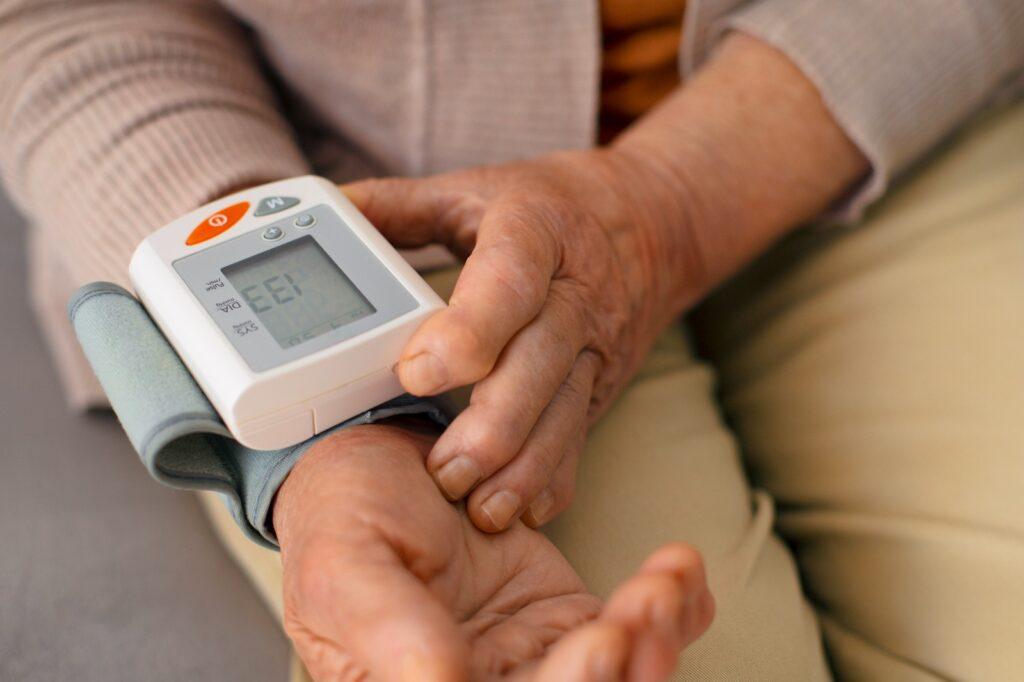

High blood pressure, or hypertension, affects millions of individuals worldwide and is a significant risk factor for cardiovascular disease. Monitoring blood pressure regularly is crucial for managing this condition effectively. Home blood pressure monitors offer a convenient way to track blood pressure readings in the comfort of your own home. However, with numerous options available on the market, choosing the best home blood pressure monitor can be overwhelming. In this article, we will provide a comprehensive review of the top home blood pressure monitors, considering accuracy, ease of use, features, and customer reviews, to help you make an informed decision.
Understanding Home Blood Pressure Monitors
Home blood pressure monitors are portable devices that measure blood pressure outside of a clinical setting. They consist of an inflatable cuff, a pressure sensor, and a display screen to show the readings. There are two types of home blood pressure monitors: upper arm monitors and wrist monitors.
Upper arm monitors are considered more accurate and reliable, as they measure blood pressure at the level of the heart. They typically have a cuff that is wrapped around the upper arm and are recommended for most individuals. Wrist monitors, on the other hand, are more compact and portable, but they may be less accurate due to their position away from the heart.
When selecting a home blood pressure monitor, accuracy should be a primary consideration. Look for monitors that are clinically validated and meet international standards for accuracy. Additionally, ease of use, cuff size, memory storage, and advanced features like irregular heartbeat detection and multiple user profiles should also be taken into account.
Top Home Blood Pressure Monitors
1. Omron Platinum Blood Pressure Monitor (Upper Arm)
– Features: Advanced accuracy, Bluetooth connectivity, dual display, irregular heartbeat detection, multi-user capability.
– Pros: Clinically validated, user-friendly, wide cuff range, reliable Bluetooth connectivity, comprehensive tracking with Omron app.
– Cons: Higher price point, occasional connectivity issues reported.
2. Withings BPM Connect (Upper Arm)
– Features: Wi-Fi and Bluetooth connectivity, color-coded feedback, LED screen, unlimited data storage, multi-user capability.
– Pros: Clinically validated, sleek design, easy to set up, excellent connectivity options, comprehensive data tracking with Withings Health Mate app.
– Cons: May require occasional calibration, higher price point.
3. Beurer BM55 (Upper Arm)
– Features: Large display, irregular heartbeat detection, arrhythmia detection, WHO classification indicator, multi-user capability.
– Pros: Clinically validated, user-friendly, adjustable cuff, easy-to-read display, affordable price, extensive memory storage.
– Cons: Cuff size may not fit very large or very small arms, occasional accuracy issues reported.
4. Omron Platinum Blood Pressure Monitor (Wrist)
– Features: Compact design, advanced accuracy, Bluetooth connectivity, irregular heartbeat detection, multi-user capability.
– Pros: Clinically validated, comfortable cuff, portable, reliable Bluetooth connectivity, compatible with Omron app.
– Cons: May be less accurate than upper arm monitors, positioning and alignment may affect readings.
5. A&D Medical Deluxe Connected Blood Pressure Monitor (Upper Arm)
– Features: Bluetooth connectivity, large display, irregular heartbeat detection, multi-user capability.
– Pros: Clinically validated, easy-to-use interface, adjustable cuff, reliable Bluetooth connectivity, syncs with A&D Connect app.
– Cons: Slightly higher price point, occasional connectivity issues reported.
Choosing the Right Home Blood Pressure Monitor
When selecting a home blood pressure monitor, consider your specific needs, preferences, and any recommendations fromyour healthcare provider. Here are some key factors to consider:
1. Accuracy: Look for home blood pressure monitors that are clinically validated and meet international accuracy standards. Accuracy is crucial for reliable blood pressure monitoring and effective management of hypertension.
2. Cuff Size: Ensure that the monitor’s cuff size fits your arm properly. A cuff that is too small or too large can lead to inaccurate readings. Most monitors provide adjustable cuff sizes, but check the manufacturer’s guidelines to determine the appropriate size for your arm.
3. Ease of Use: Choose a monitor that is user-friendly and easy to operate. Clear instructions, intuitive buttons, and a straightforward display make the monitoring process more convenient.
4. Memory Storage: Consider the monitor’s memory storage capacity. Some models can store multiple readings for multiple users, which is useful for tracking and sharing data with healthcare professionals. Additionally, monitors with date and time stamps can help monitor changes over time.
5. Connectivity and Apps: Bluetooth or Wi-Fi connectivity enables seamless data transfer to smartphone apps or other devices. Some monitors have dedicated apps that provide comprehensive tracking, analysis, and visualization of your blood pressure readings. Check if the monitor is compatible with your preferred app or software.
6. Customer Reviews: Read customer reviews and ratings to gain insights into the monitor’s performance, accuracy, durability, and customer support. Look for monitors with positive reviews and a good reputation among users.
7. Budget: Determine your budget range and find a monitor that offers a balance between affordability and quality. Remember that investing in a reliable and accurate home blood pressure monitor is a worthwhile investment in your health.
Conclusion
Choosing the best home blood pressure monitor requires careful consideration of accuracy, ease of use, features, and customer reviews. The Omron Platinum, Withings BPM Connect, Beurer BM55, Omron Platinum (Wrist), and A&D Medical Deluxe Connected are some of the top-rated monitors available. Remember to consult with your healthcare provider for specific recommendations based on your individual needs. Regular monitoring of your blood pressure at home empowers you to take control of your health and effectively manage hypertension.
